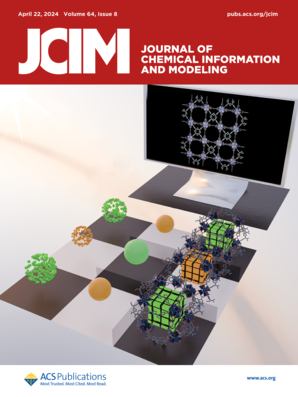人CYP3A4催化6′,7′-二羟基佛手柑素代谢氧化的QM/MM研究:γ-酮醛产物在机制失活中的优先形成。
IF 5.6
2区 化学
Q1 CHEMISTRY, MEDICINAL
引用次数: 0
摘要
6',7'-二羟基佛手柑素(DHB)是一种存在于葡萄柚中的天然呋喃香豆素,已知可导致人体中包括 CYP3A4 在内的几种细胞色素 P450 酶(P450s)的机理失活(MBI)。尽管 DHB 具有重要的药理作用,但其诱导 P450 MBI 的精确微观机制仍不清楚。为了解决这个问题,我们采用了分子对接和分子动力学模拟来确定 DHB 在 CYP3A4 中的合理催化结合位置。随后的量子力学/分子力学(QM/MM)计算探索了两种可能的反应途径(A 和 B)。路径 A 涉及化合物 I(Cpd I)对呋喃分子 C5 位的攻击,从而形成γ-酮烯醛,而路径 B 则针对 C4 位,生成环氧化物。路径 A 的活化能势垒要低得多,表明其具有强烈的动力学偏好。此外,γ-酮烯醛在热力学上比环氧化物更稳定。因此,即使最初形成环氧化物,它也有可能在酶内或水溶液中重新排列为γ-酮烯醛。这些发现共同表明,γ-酮烯醛是 CYP3A4 氧化 DHB 的唯一最终产物。这项研究为了解葡萄柚成分对 CYP3A4 的灭活作用提供了宝贵的见解,并加深了我们对食物与药物相互作用的理解。本文章由计算机程序翻译,如有差异,请以英文原文为准。
QM/MM Study of the Metabolic Oxidation of 6',7'-Dihydroxybergamottin Catalyzed by Human CYP3A4: Preferential Formation of the γ-Ketoenal Product in Mechanism-Based Inactivation.
6',7'-Dihydroxybergamottin (DHB), a natural furanocoumarin found in grapefruit, is known to cause mechanism-based inactivation (MBI) of several cytochrome P450 enzymes (P450s) in humans, including CYP3A4. Despite its pharmacological significance, the precise microscopic mechanisms underlying the P450 MBI induced by DHB remain unclear. To address this, we employed molecular docking and molecular dynamics simulations to identify a plausible catalytic binding pose of DHB within CYP3A4. Subsequent quantum mechanics/molecular mechanics (QM/MM) calculations explored two possible reaction pathways (A and B). Path A involves the attack by compound I (Cpd I) at the C5 position of the furan moiety, leading to γ-ketoenal formation, while Path B targets the C4 position, yielding an epoxide. Path A exhibits a much lower activation energy barrier, indicating a strong kinetic preference. Additionally, the γ-ketoenal is thermodynamically more stable than the epoxide. Thus, even if the epoxide forms initially, it is likely to rearrange into the γ-ketoenal, either within the enzyme or in aqueous solution. Collectively, these findings suggest that the γ-ketoenal is the sole ultimate product of DHB oxidation by CYP3A4. This study provides valuable insights into CYP3A4 inactivation by grapefruit constituents and advances our understanding of food-drug interactions.
求助全文
通过发布文献求助,成功后即可免费获取论文全文。
去求助
来源期刊
CiteScore
9.80
自引率
10.70%
发文量
529
审稿时长
1.4 months
期刊介绍:
The Journal of Chemical Information and Modeling publishes papers reporting new methodology and/or important applications in the fields of chemical informatics and molecular modeling. Specific topics include the representation and computer-based searching of chemical databases, molecular modeling, computer-aided molecular design of new materials, catalysts, or ligands, development of new computational methods or efficient algorithms for chemical software, and biopharmaceutical chemistry including analyses of biological activity and other issues related to drug discovery.
Astute chemists, computer scientists, and information specialists look to this monthly’s insightful research studies, programming innovations, and software reviews to keep current with advances in this integral, multidisciplinary field.
As a subscriber you’ll stay abreast of database search systems, use of graph theory in chemical problems, substructure search systems, pattern recognition and clustering, analysis of chemical and physical data, molecular modeling, graphics and natural language interfaces, bibliometric and citation analysis, and synthesis design and reactions databases.

 求助内容:
求助内容: 应助结果提醒方式:
应助结果提醒方式:


